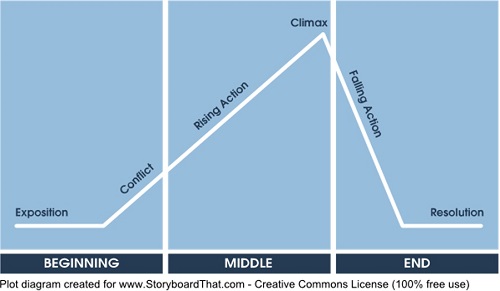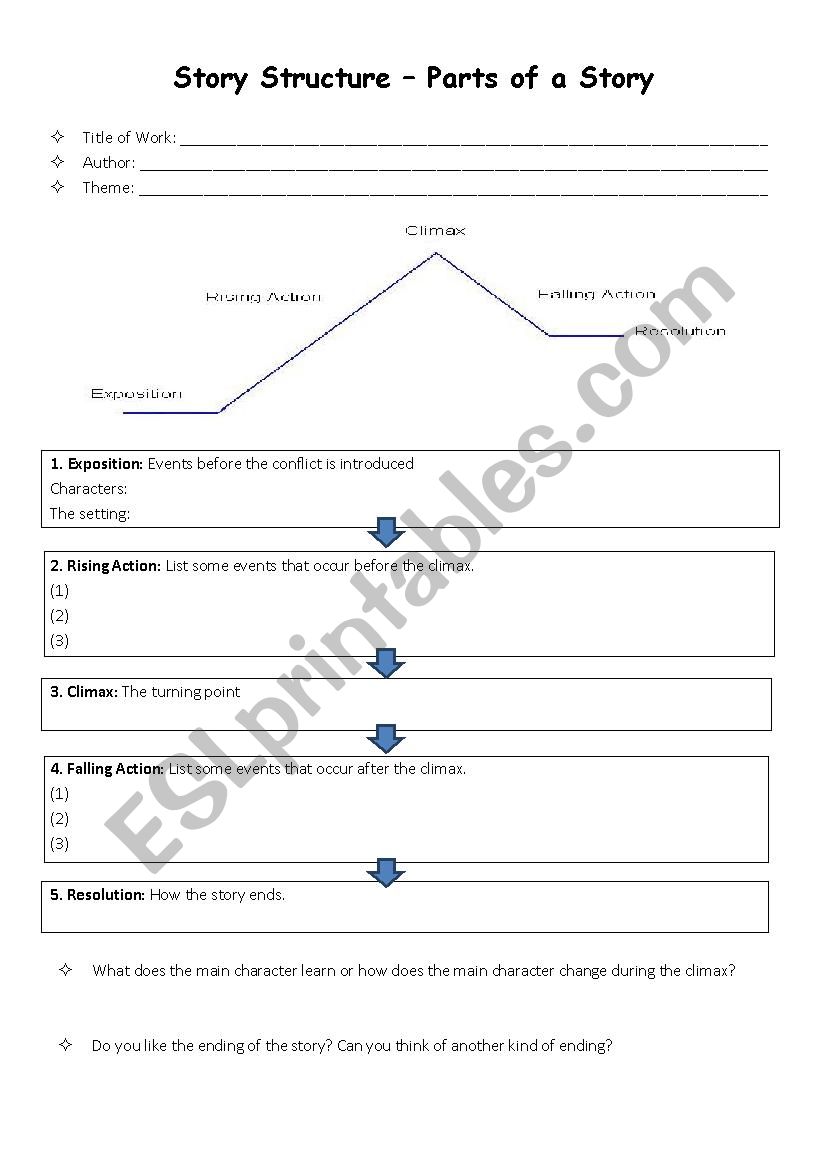



The rising action is the part of a story that begins after the exposition (introduction) of the story and leads the reader to the climax. Here, we’ll explore the definition of rising action, how rising action plays a role in the development of your story, and tips on keeping your reader engaged as your story develops. Instead, they’ll enjoy the development of both the story and the characters as the climax approaches. Then, when you appropriately develop the rising action portion of your story, your reader won’t feel like they’re being strung along.
#EXPOSITION RISING ACTION CLIMAX FALLING ACTION RESOLUTION HOW TO#
The rising action portion of your writing will take up the majority of the plot, and it’s key that you understand how to keep your reader engaged, constantly wanting to know more about your characters and excitedly turning to the next page. As a writer, it’s key to spend plenty of time developing the rising action of your story. Rising action refers to the period between the exposition (the part of your story that introduces characters, sets the scene, and helps readers understand the themes of your short story or novel) and the climax of your story (when the tension breaks and the conflict of the story is resolved). When you have a story you want to tell, it can be tough to figure out how much time you should spend introducing your characters and leading your audience to your story’s turning point or climax. Let’s learn more about rising action in a story. Rising action takes the reader from the initial problem to the climax of the story. Best Grammarly Alternatives Menu Toggle.


 0 kommentar(er)
0 kommentar(er)
